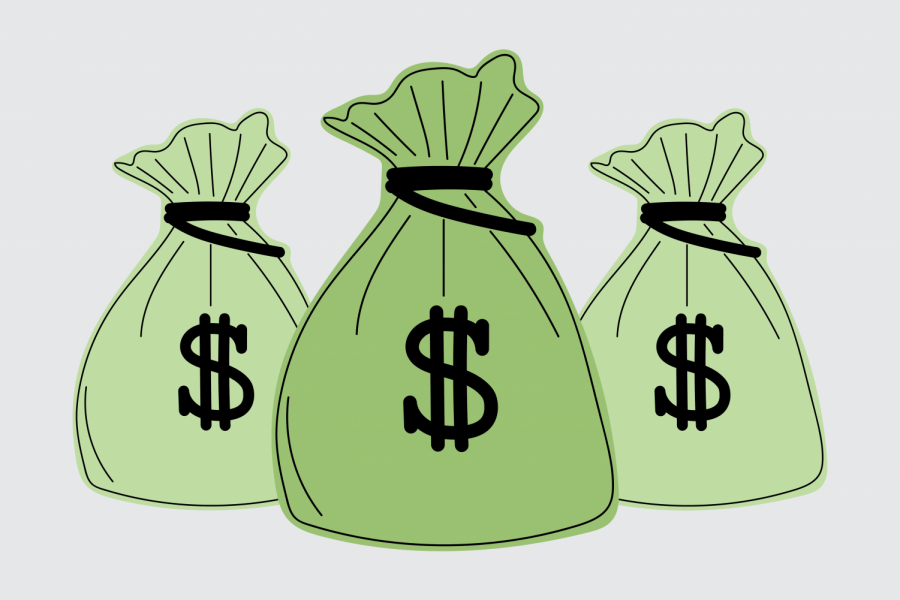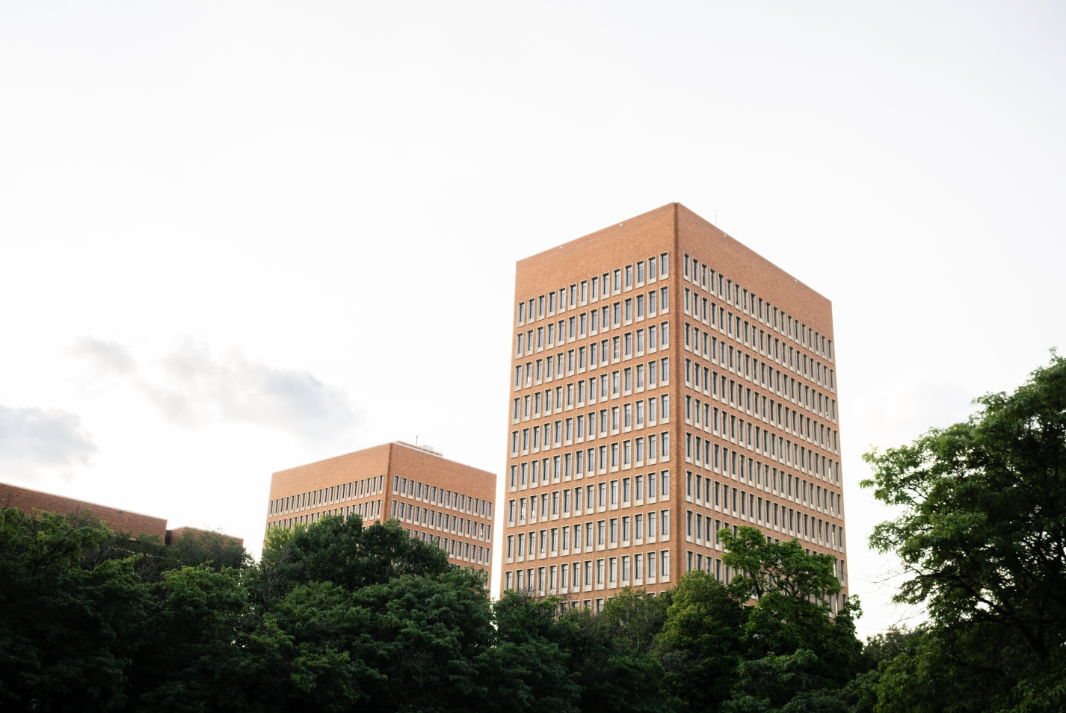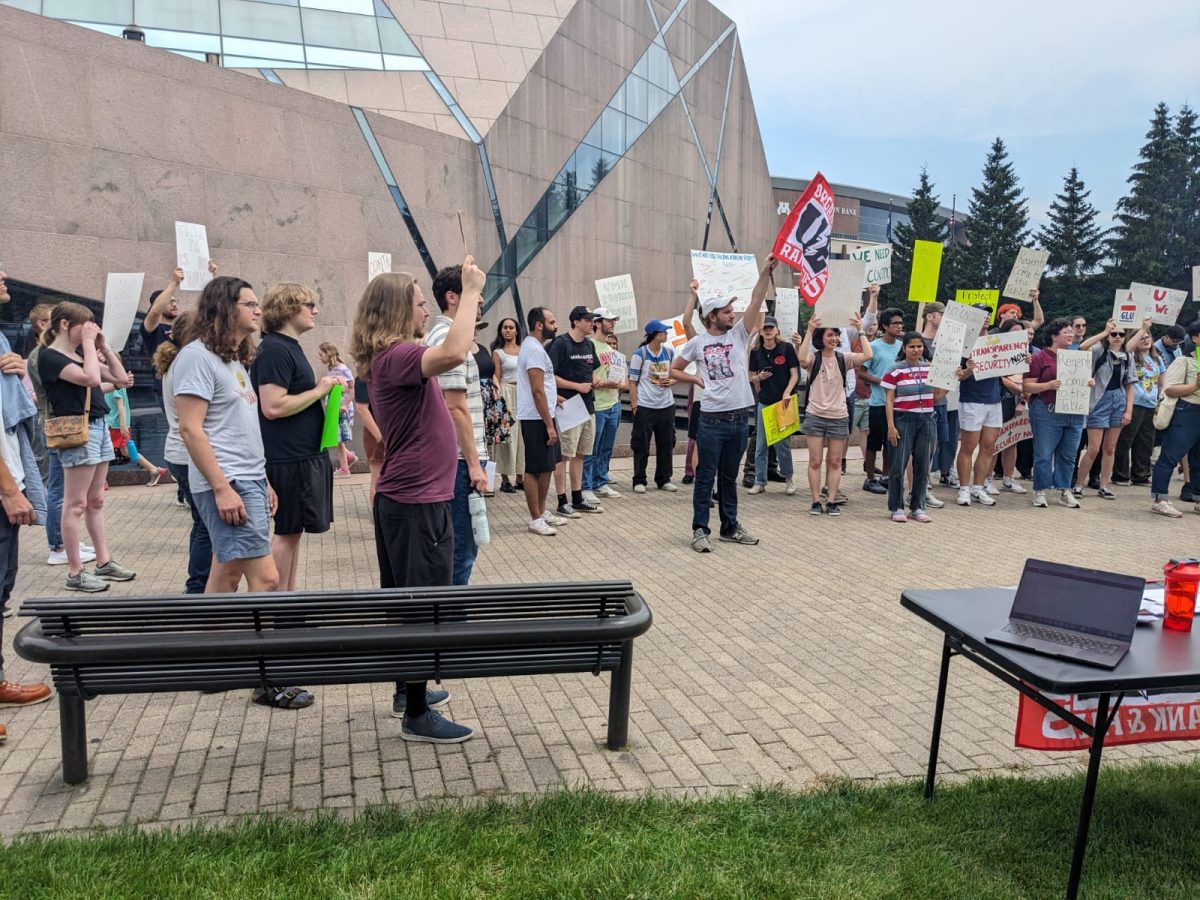Before the University of Minnesota raised its minimum wage last fall, student workers said they struggled to make ends meet. Since the increase from $10.33 to $15 per hour took effect Oct. 19, many now feel their job is worth their time.
The Undergraduate Student Government (USG) advocated for the $15 increase for more than a decade. However, leaders prioritized it as a goal to achieve for the 2021-22 school year after hearing about the financial hardships student workers were facing.
Sara Davis, a second year student at the University and a ranking representative to the Board of Regents for USG, said even though she was not on the committee within USG dedicated to Fight for $15, it was an “all-hands-on-deck situation.” She said everyone was helping out however they could.
“I think the momentum helped a lot because the University was kind of like ‘Oh we need to get on board with this,’” Davis said.
Davis said USG members helped out by talking to different student groups they were a part of, hosting rallies and getting signatures by talking to coworkers and people at their student jobs.
“This is not going to cut it”
Cami Biggar, a second-year student at the University, has had a job in University housing since September of her first year.
Biggar said before the minimum wage increase went into effect, she was making $11.25 per hour. She said she was looking for a second job because her hourly wage was not going to be enough to cover her expenses once she moved from the dorms to an apartment.
“I genuinely liked the position I was working,” Biggar said. “But at the time I was looking for a second job because I was like, ‘This is not going to cut it.’”
Biggar said she was worried about working two jobs on top of being a full-time student though. When the minimum wage increase was announced in August, Biggar said her hourly wage was raised to $16.25 per hour.
“I was really nervous about it because I don’t get very much support from my parents, and so with that, a lot of the money situation is on me,” Biggar said. “It was a huge relief to know I was getting this $5 raise.”
On July 1, the city-wide minimum wage for large businesses in Minneapolis became $15 per hour. Biggar said when she heard that, she was confused about why the University was paying students less than that.
“It kind of made me start thinking, like I don’t understand why I’m choosing to do an on-campus job when I’m getting paid the low[er] minimum wage,” Biggar said. “But now, it’s a lot better because I actually feel like I’m getting paid worth what I’m working.”
Biggar said she feels her work is worth something more now and she plans on working her current job until she graduates.
Charlie Breslin, a first-year graduate student at the University, has worked at Wilson Library as a student library aide for about two years.
Breslin said he was making $10.34 per hour until last September when he was given a $1 raise a month before the minimum wage increase took effect. Breslin said he would not have been able to continue to work at Wilson without the Fight for $15 movement’s success.
“This job rocks and that is the only reason I kept it,” Breslin said. “I moved somewhere where the rent is higher, so I would not be here still if the pay didn’t improve.”
Breslin said he is happy about the pay increase and plans to keep his current job for the foreseeable future.
Breslin said he had to ask his parents for money a few times last year, which he felt embarrassed about, but he has been financially independent since the minimum wage increase.
However, Breslin said he still isn’t sure if his new wage will be enough to make ends meet.
“I think it’s still too low,” Breslin said. “My take on it is the 15 an hour has been outdated pretty much since people started fighting for it, and it sucks that it’s just now gaining traction.”
University student employment rates are consistent so far
Brandon Sullivan, senior director of talent strategy at the University’s Office of Human Resources, said in an email statement to the Minnesota Daily that upping the minimum wage makes the University a more competitive employer.
However, Sullivan said the number of student workers has stayed consistent when comparing the pay periods from last fall to previous fall semesters.
“Student employment is a priority for the University,” Sullivan said in the statement. “The Office of Human Resources has just begun a collaboration with the other University departments to better attract and retain student workers who provide value.”
From 2015 to 2021, the average wage for student workers increased from $10.30 to $11.97 per hour. From 2021 to 2022, the average wage has increased nearly 30%, up to $15.31 per hour, according to University payroll records of fall semesters from 2015-2022.
From 2015 to 2020, several University departments experienced a decline in student workers. In fall 2022, student workers in the food/labor/security and the admin/support services departments saw the steepest declines, down 708 and 634 workers respectively, compared to 2015 numbers.
However, the number of total student workers has started to rise with a nearly 40% increase compared to 2020. So while the number of student workers is increasing, it still lags behind pre-pandemic highs.
Kent Kramp, owner of the Dinkytown and Stadium Village Raising Cane’s locations and vice president of the Dinkytown Business Alliance, said he has not noticed a change in Dinkytown’s student employment numbers since the wage increase.
“If they were going above and beyond where we are as an employer, it would’ve been more shocking because it would’ve been tough competition,” Kramp said.
Kramp said he does not feel at a disadvantage in hiring students because his business already had a minimum wage higher than $15 per hour prior to the University increase. Kramp said if the University’s minimum wage increased again in the future, it could require him to raise his pay rates to meet the area’s demands.



























